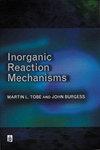Low-temperature Spectroelectrochemistry of Tetraethylammonium Tris(ethylxanthato)nickelate(II) and Bis(ethylxanthato)nickel(II) Complexes
引用次数: 0
Abstract
One-electron constant potential electrolysis of tetraethylammonium tris(ethylxanthato)nickelate(II), (NEt 4 )[Ni(S 2 COEt) 3 ] and bis(ethylxanthato)nickel(II), Ni(S 2 COEt) 2 , at their lowest oxidation peak potentials, were followed by in situ UV-VIS spectrophotometry, in acetonitrile at 253 K. In both cases [Ni III (S 2 COEt) 3 ] complex formed and detected by its electronic absorption and EPR spectra. [Ni III (S 2 COEt) 3 ] slowly disproportionated to Ni(S 2 COEt) 2 and the dimer of the oxidized ethylxanthate ligand, (S 2 COEt) 2 , with a second-order rate law.三(乙基黄原托)镍酸四乙基铵(II)和二(乙基黄原托)镍(II)配合物的低温光谱电化学
采用原位紫外-可见分光光度法,在253 K的乙腈中对三(乙基黄原糖)镍酸四乙基铵(II), (NEt 4)[Ni(s2 COEt) 3]和二(乙基黄原糖)镍(II), Ni(s2 COEt) 2进行了最低氧化峰电位的单电子恒电位电解。在这两种情况下[Ni III (s2 COEt) 3]络合物形成,并通过其电子吸收和EPR光谱检测。[Ni III (s2 COEt) 3]以二级速率缓慢歧化成Ni(s2 COEt) 2和氧化的乙基黄药配体(s2 COEt) 2的二聚体。
本文章由计算机程序翻译,如有差异,请以英文原文为准。
求助全文
约1分钟内获得全文
求助全文

 求助内容:
求助内容: 应助结果提醒方式:
应助结果提醒方式:


